Revised from DISGUISE OF SANITY Pepperbox Books © Michael Cartel

John Gacy performed a magic show that fascinated Robert-something. Gacy had hired him for a week-end job, then invited the 16-year old boy home for a private show. Gacy often entertained free for children; he was a registered, professional clown, and was always available when a group could be arranged. But not many people knew that he sometimes entertained only one boy at a time.
Gacy fitted a pair of trick handcuffs on his own wrists, made a gesture and snapped them open. Then he told the boy that he could teach him the trick if he slipped his own hands into the manacles. Robert struggled through the same maneuvers he saw Gacy use but the cuffs wouldn’t open. Gacy now showed his ‘rope trick,’ slipping a noose over the boy’s head. He quickly tightened the ligature, stuffing rags deep into Robert’s mouth to cut his screams. For several hours Gacy sodomized and choked the boy, tensing the garrote just enough for Robert to go in and out of consciousness. When he was no longer aroused, Gacy finally strangled the boy to death. He pulled the body into his closet and through a trap door that led under the house. For the past seven years Gacy had dumped over 30 other boys into that same crawl space, but now he ran out of room.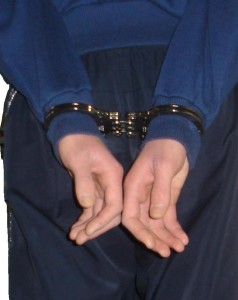
Earlier, John Wayne Gacy lived in Waterloo, Iowa with a wife and two children. Everyone remembers him as a model neighbor, husband, father, and despite his dumpy profile and less than handsome face, Gacy was attractive to many women. He was a workaholic, running three fast food restaurants while active in several charity and civic groups, including local jaycees.
What they did not know was that Gacy had been severely disciplined as a child and tried to keep under control a commanding rage. His alcoholic father was terribly disappointed in his accident-prone, pudgy son who was the complete opposite of the John Wayne name that he had chosen for Johnny. As an infant, Gacy was administered enemas regularly by his mother, although there was no reason for the ordeal. He fused together sex and violence, his fantasies building with a fast temper as he grew older. In 1968, Gacy was convicted for raping a 16-year old boy and sentenced to prison for 10 years. Away from the temptation of young victims he was once again a saint. Convinced of his rehabilitation, the Iowa parole board released Gacy in just 18 months.
Divorced by his wife during imprisonment, Gacy moved north to Chicago in 1971, just as he turned 29. One of the first things he did was get himself arrested again for a sex crime. But this time Gacy got released when the teenaged victim didn’t appear in court. Gacy remarried the following year, his new wife believing that she had finally found the perfect man. So it would seem. Gacy’s new business, the PDM Construction Company was expanding, now pulling in $200,000 annually (in 1972 dollars). People in and around Gacy’s home in the Chicago suburb of Norwood Park also thought that Big John was an exceptional man. All of this admiration took place about the time he started killing regularly.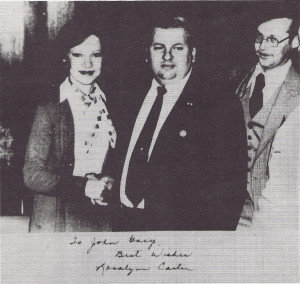
As in Iowa, Gacy became active in charities and local affairs, this time working hard in local party politics. By 1975, John was offering himself for every political task, working both menial and managerial positions. In a visit two years after the presidential election, First Lady Rosalynn Carter posed with John Gacy in a photograph at a private reception. Gacy had finally arrived at several levels of success, and was now rising in the Democratic party. As a bizarre historical postscript, before meeting Gacy, Mrs. Carter had just returned from the West Coast were she had posed with the Reverend Jim Jones before his departure to Guyana (where he would later murder 914 people in one day with Kool-Aid and bullets).
After his local business hours, Gacy did favors for everyone around him. He threw block parties and loved to entertain children in hospitals, shopping centers,community fairs or wherever they could be gathered. Often he dressed as ‘Pogo’ the clown where he handed out balloons and performed exceptional magic tricks. But his wife started seeing his psychological mask slip.
Occasionally after drinking Gacy got angry, sometimes smashing furniture and wrecking the house. But this was infrequent and never, of course in front of neighbors. He did surprise one of his friends by telling him that he did a lot of horrible things, “but I do a lot of good things too,” he added.
By now Gacy’s mother-in-law was staying with them. It was now difficult to kill the boys without a family member returning or suspecting something, especially with Gacy’s leisure style of murder. But he managed. The corpses buried under the house soon gave off a hideous odor, his wife’s mother thinking the smell came from dead rats, and Gacy’s wife demanding that he do something about it. He said that it came from the sewage and promised to call a plumber, but he always postponed it.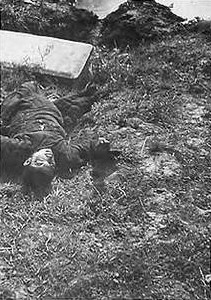
In 1976, his second wife divorced him after four years of marriage, seeing serious problems with John but unaware of the scores of bodies under her feet. Now no longer hindered by two woman as he casually murdered, Gacy drove the streets at night to hunt for a boy whenever he felt the need.
And Gacy felt the need often, finding plenty of boys around the Bughouse Square Park late at night while he cruised. Other times he merely induced boys during the day by offering them jobs with his construction company. Then the handcuff trick, and then the noose, and they were as good as dead. But not before a few hours of bondage and torture. Often Gacy liked to recite the 23rd Psalm as a grisly joke while raping and erotically strangling.
Gacy was supervising a drugstore construction job in nearby Des Plaines when he spotted 15-year old Robert Piest. Gacy told the boy he would pay him five dollars hourly if he worked during that 1978 summer. When his mother came to pick Robert up he told her about the offer. Then he said that he wanted to take a moment to talk to the contractor. Mrs. Piest waited but Robert never returned.
Robert’s mother called the police, but instead of the report being handled as another routine missing teen case, Lieutenant Joseph Kozenczak just happened to be on duty and recognized the name. His own son went to school with Robert. Kozenczak found that the drugstore project was being handled by a Mr. John Wayne Gacy.
Kozenczak checked on Gacy and located the old Iowa juvenile rape conviction. A judge ordered a search warrant for detectives on December 3, where they found several driver licenses, slender teen clothing, handcuffs, a suspicious (torture?) board with eye-hook holes, an injection syringe, a H.S. class ring with an engraving and other important finds. But it was a receipt for a roll of Robert Piest’s film that would allow detectives back with an expanded warrant at a later time. Cops also impounded Gacy’s Oldsmobile and put a surveillance tail to follow their suspect in his new rented car.
Gacy was having fun leading cops through red lights, hairpin turns, endless wild goose trails, often losing them. Gacy taunted police by offering them dinner or drinks along the way or at his home. Soon Gacy tired of the adventure but detectives stepped up their surveillance, watching and following Gacy at all hours. In just a few days Gacy was cracking under the pressure. Gacy looked nervous and spent entering his lawyer’s office where he had the attorneys file a civil lawsuit against the Des Plaines Police Department demanding money damages.
At the same time, search dogs located a (death reaction) scent of Robert Piest on the passenger front seat of Gacy’s confiscated Oldsmobile. Also, human hair was gathered from the truck of the car and sent for lab tests.
A girlfriend of Robert Piest who worked at the drugstore (that had hired Gacy’s construction company) told detectives that she had worn Piest’s coat, putting the undeveloped film receipt in the pocket – then gave the coat (with the receipt) back to Piest as he went to talk to Gacy on December 11. Gacy had previously told police that he hadn’t seen Piest on that evening.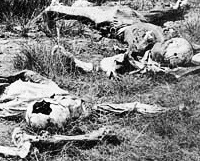
On a second meeting with his lawyers, Gacy arrived unshaved, sleep-deprived, drunk, rambling about his killings. Waking after having fallen asleep in the law office, Gacy drove to get fuel for his car and gave a bag of marijuana to the station attendant. The surveillance cops took the contraband bag from the gas attendant as Gacy raced to make his final goodbyes to several people.
While Gacy’s last ride was playing out, one of his trusted workers told police that Big John had admitted (the night before) he murdered Robert Piest; that the boy cried for his life when a rope was fixed around his neck. Detectives interrupted Gacy’s farewells to arrest him for the earlier marijuana incident at the gas station. With their suspect safely caged, Lieutenant Kozenczak called Deputy District Attorney Terry Southern to help him write a definitive search warrant for Gacy’s property.
Police workmen entered the home, attractive Christmas lights still trimmed along the brick walls in January. They located a hidden floorboard in Gacy’s bedroom closet that led to a 40 foot tunnel. Gacy thought he had outfoxed the cops by flooding his under-house crawl space by dismantling his sump pump. Investigators merely turned off the water while a police tech dug through the mud, soon yelling to detectives on the floor directly above him that he had plowed into rotting human remains.
After dismantling the entire house interior and ripping out the foundations, police retrieved enough remains to distinguish at least 28 small victims. But few could be identified by Gacy who never knew their names. They were, after all, street hustlers, runaways or just discarded trash (in Gacy’s words). Robert Piest was one of the boys he remembered throwing into the river. He hadn’t been killed that long ago. Gacy also teased that perhaps he had accomplices to assist with several more kills; “That’s for you guys to find out.”
From his rape of a boy in 1968, a psychiatrist told the court that Gacy had an antisocial personality (off-the-shelf psychopath) and had no conscience (in plane-speak, as laymen understand the term). 11 years later at his murder trial, court-appointed psychiatrists said pretty much the same thing about Gacy. What was important is that it conveniently allowed the court to prosecute him as legally sane. 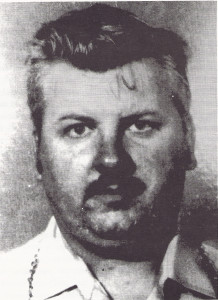
District Attorney Southern conducted the case for the State in 1979, charging Gacy with 33 first degree homicides, the largest number ever officially filed to one person in America. Gacy’s defense team argued that their client was ill and unable to control his compulsions, saying that he had a multiple personality disorder. Gacy had actually fooled three doctors into concluding that he was a ‘paranoid schizophrenic.’ In addition, Gacy’s lawyers told the jury that their client should not be executed, but remain imprisoned to be studied by and for science.
The jury thought otherwise and sent the 36-year old defendant to Death Row, where be began the appeal ritual while recanting his various confessions.
While he had no remorse for the murdered boys, Gacy was most concerned (about having it revealed that he had raped the victims as well) that he not be mistaken for gay. He was, he said, bisexual,”…after all, I do have some pride.”
Jason Moss at age 18, started correspondence relationships with several convicted serial killers, but got a response from John Gacy in 1994. Moss began this as an investigation/experiment for a thesis while a student at UNLV. He thought it would also be beneficial if and when he applied to the FBI for a job. After manipulating the manipulator through letters and phone talks, Moss made considerable progress in gaining Gacy’s trust.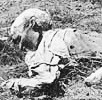
Eventually (and just before the execution) Moss met Gacy in prison, sitting in a private room with him. Moss said that (among other things) Gacy turned angry and grabbed him tightly, holding a sharpened pencil at Moss’ throat threatening to murder him. Guards in an adjacent room were suppose to be watching the video of the cell but when Gacy grabbed Moss, they thought the two men were kissing and stopped watching. Gacy had reduced Moss from friend and admirer to disposable victim from moment to moment.
Gacy traveled to Stateville Correctional Center on May 9 for execution. The next morning Gacy was escorted to the lethal injection chamber and tied to a gurney. Gacy waited 10 minutes while prison techs unclogged an IV line that had hardened. Blinds were then opened to members of the press and selected observers as Gacy took the needle. “Kiss my ass,” was Big John’s last words before leaving the Earth.
While all this was unfolding, over a thousand people stood outside the prison walls to wait for Gacy’s death with imaginative placards that included ‘No Tears For The Clown.’ Those against capital punishment held lighted candles.
William Kunkle, one of the prosecutors at the murder trial, was at odds with some who thought that Gacy had unduly suffered for the 10 minute execution delay, saying that “He got a much easier death than any of his victims.”
AFTERWARD
Jason Moss, who was nearly murdered in a private prison room by Gacy just before his execution, wrote a book titled The Last Victim regarding himself as helpless when finally confronting the monster. Moss lectured on what he learned about Gacy’s thoughts and how he controlled susceptible people. That ordeal 12 years earlier contributed to Moss’ suicide in 2006.
The Missing Child Recovery Act of 1984 was written by Gacy’s defense attorney Sam Amirante (from the 1980 trial), saying that it was because of the 72-hour wait time before cops could look for a missing child (which helped his former client immensely in the murders). Amirante’s efforts required Illinois authorities to begin an immediate statewide search. Other states wrote similar laws that was soon nationally federalized into the Amber Alert (Child Abduction Emergency) system.
Perhaps no one was more surprised by the media circus or by ending up in the death house than John Wayne Gacy himself, telling a psychiatrist after his arrest that the worst thing the cops could get him for was running a funeral parlor without a license.

Disguise of Sanity 1985, booklength nonfiction. Revised/updated third edition soon on Kindle ©Michael Cartel
CLICK ON DISGUISE OF SANITY KINDLE to Order on AMAZON


